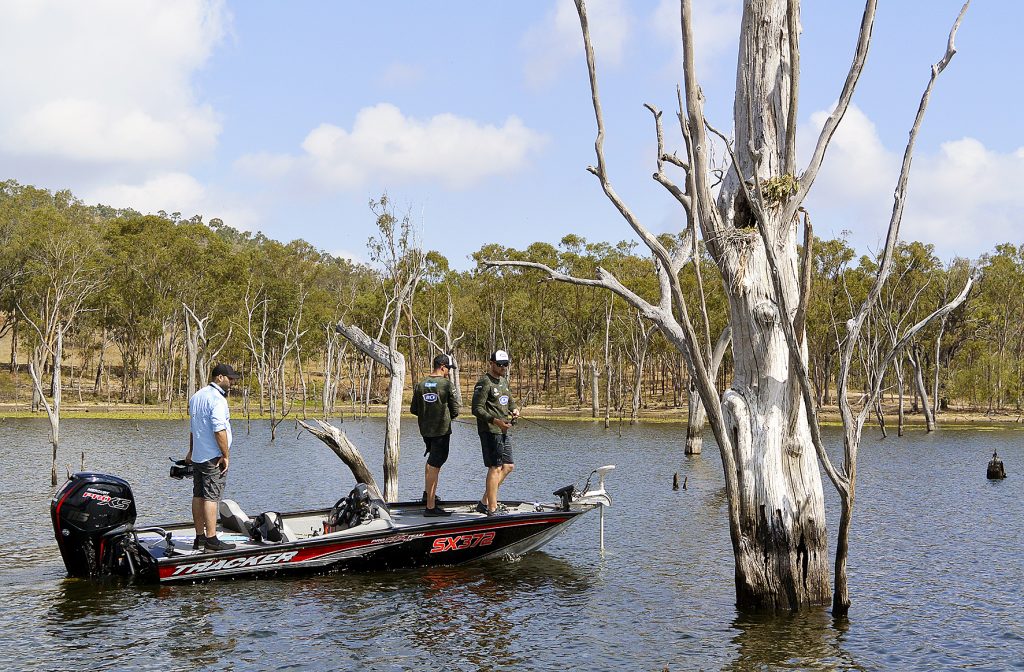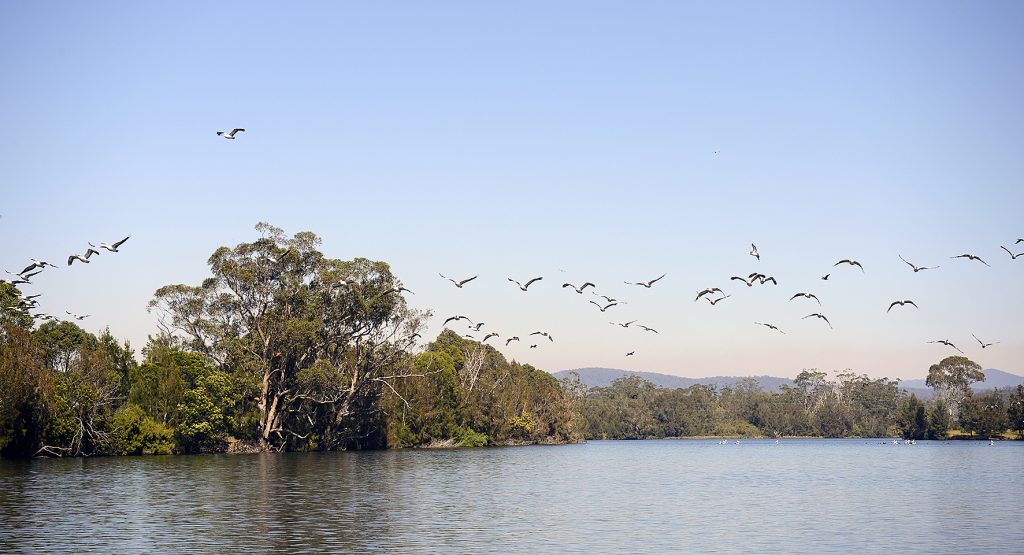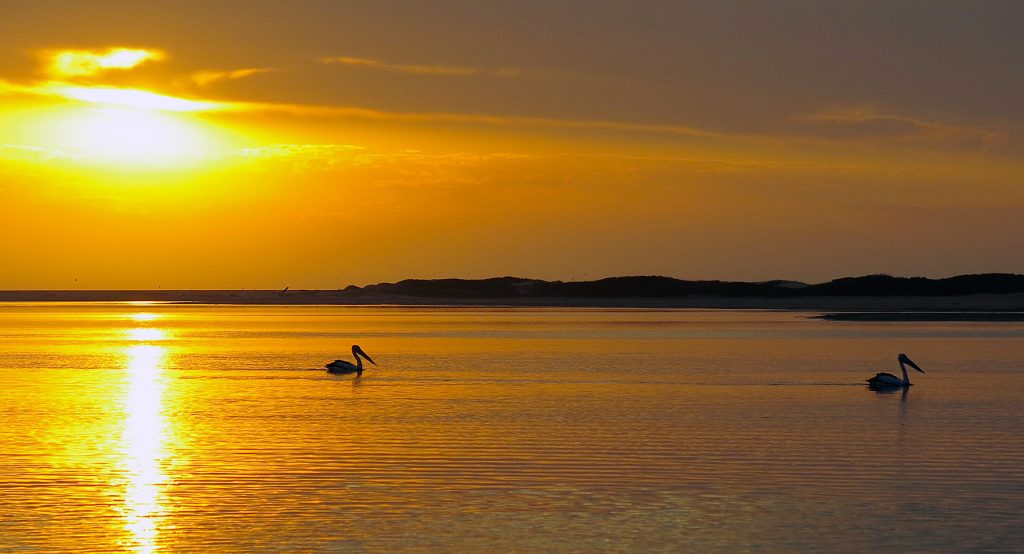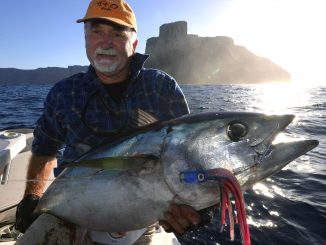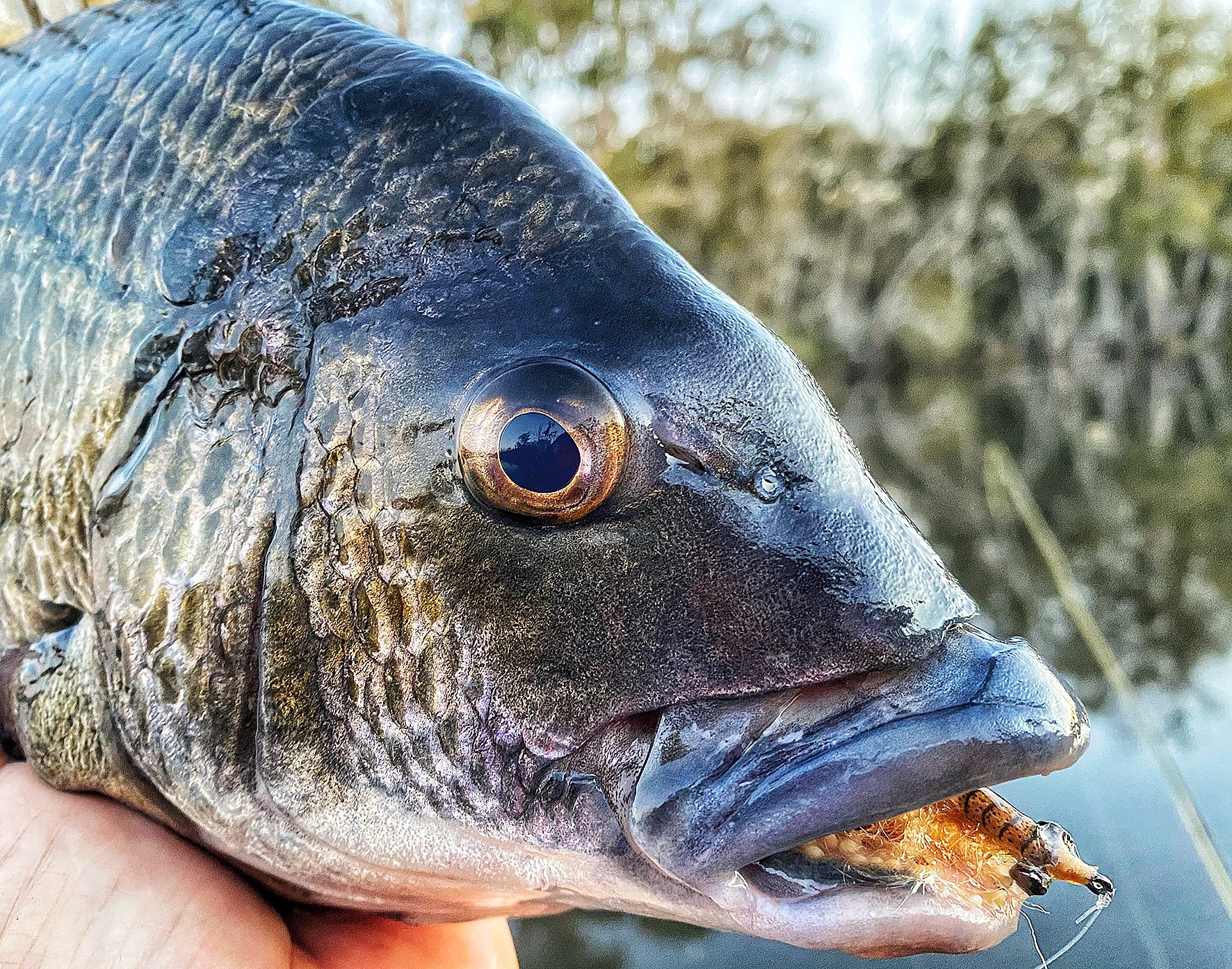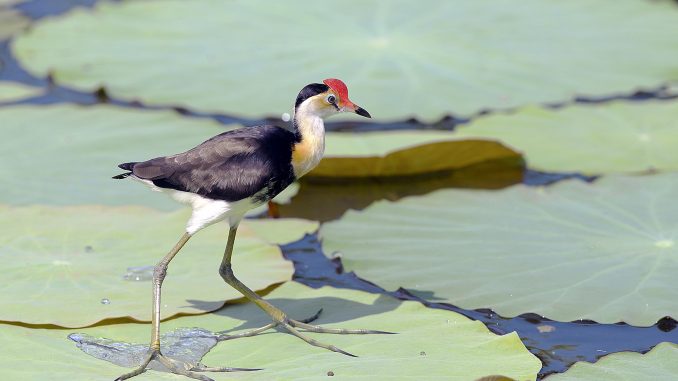
by Steve ‘Starlo’ Starling •
Most of us know that birds can be a great indicator of the presence of fish, but you might not have realised just how complex and subtle these feather-to-scale connections can be at times.
There are few better signposts to the presence of a school of actively feeding pelagic fish than a wheeling, squawking mass of seabirds circling, dipping and diving over the water. Those fish might be yellowtail kings in Sydney Harbour, tailor off a Queensland beach, southern bluefin tuna along the Tasmanian or Victorian coasts, Aussie salmon in the south west, or queenies and trevally anywhere up north.
The relationship between seabirds and fish is fairly obvious: as aquatic predators drive the bait they’re feeding on toward the surface, birds are able to cash in on this sudden bonanza, scooping up whatever they can from above or — in the case of some species, such as gannets, albatross and shearwaters (mutton birds) — actually diving beneath the waves to join the mayhem.
Thanks to their excellent eyesight and ability to cruise high above the water looking for signs of action, seabirds often locate these feeding events long before we have any chance of spotting them. In many cases, birds can actually see the hunting packs of pelagic fish swimming well beneath the surface and track them as they hunt food, only dipping down when the melee begins. In this way, birds act as our eyes in the sky, telling us not only where the action is, but when it commences.
Of course, some types of seabirds are more accurate indicators of fishing fortune than others. The humble seagull can often give us a bum steer by getting all worked up over a discarded chip… or even an empty chip packet! By contrast, savvy avian hunters such as terns, petrels, prions, gannets, boobies, frigates and albatross are generally far better indicators of action, and some switched-on anglers become adept at reading their body language and interpreting their signals.
When searching for kingfish off the far south coast of NSW, my mate Bushy will observe the direction the majority of birds are flying first thing in the morning. “If they’re all going south,” Bushy explains, “then I go south! Somewhere down there will be bait and fish.”
In a similar vein, some very switched-on game fishers I met in Fiji years ago who swore they could tell how deep cruising tuna and billfish were in any area from the height of the circling frigate birds. If the frigates were way up, the fish were down deep, but when those black-winged buccaneers swooped, it meant the big fish were coming to the surface. I’ve seen this proven on many occasions.
Other game fishers have learnt to follow the birds well before they can see them, by looking for the vague shadows of their concentrated flocks on finely-tuned radar screens!
Feathered connections aren’t limited to the ocean, either. Pelicans and cormorants give us valuable clues on the estuary, or even in freshwater environments. At Eungella Dam, in the ranges above Mackay, clever fishos hunting sooty grunter look for trees with the thickest coatings of shag droppings and fish under them. The presence of these perpetually hungry birds not only indicates concentrations of baitfish but, believe it or not, the fish-rich droppings themselves are actually a favourite snack for sooties!
Elsewhere in the sweetwater, swallows will announce insect hatches on highland streams well before the first trout rises, while kingfishers eat the same things bass like to hunt. Egrets and herons standing stiffly to attention, or dipping their heads suddenly to snatch a hapless rainbow fish from the fringes of a tropical waterhole, signpost prime feeding areas for barra and saratoga. There are so many feathered messengers out there, if you simply take the time to look.
Finally, no discussion of birds and their role in our angling world would be complete without mention of the importance of protecting these airborne fellow fishers. We have a duty of care to avoid hooking or entangling birds, and that means never deliberately discarding line, hooks or other gear, and taking a moment to pick up litter left by others. We also need to be sensitive of the nesting grounds of shore and wading birds. I recently presented a short video discussing exactly this important subject, which you can watch by scanning the accompanying QR code, or by searching for “saving our shorebirds” on YouTube.
The birds are our friends. Please treat them as such.

